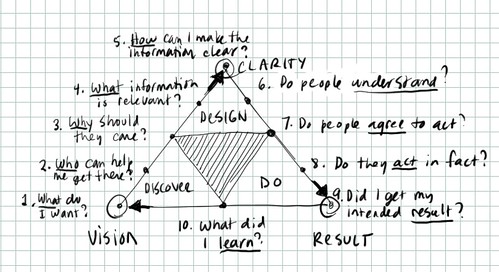Inquiry Model
Inquiry Model - From a stakeholder perspective The stakeholder analysis helps define priorities and focus short to middle term actions of groups active on the ground that can be implemented while a framework is being developed.
The following questions can help make sense of the trends, of what is emerging in the environment, which audiences would need to be pursued in priority and leverage the most salient elements of it.
- Cultural: What existing shared values and visions are already moving in this direction? Where are the 'pockets' of opportunity?
>> Who are the actors who embody these values?
- Behavioral: Which actions are already modeling the 'desired' behaviors and showing the way? What are the drivers and challenges for these actions?
>> Who are the actors involved?
- Systemic: What existing structures and systems have the most power, influence, authority or passion to help bring our goals about?
- Psychological: How do the individual mindsets, world views and preferences influence the process and the outcomes?
>> Link to the Commons Worldviews and Logics
Synthesis: the 3D model for learning and improvement
By Dave Gray http://www.davegrayinfo.com
 Who can get me there - Who is involved
Who can get me there - Who is involved

Source http://www.imaworldwide.com
Managing resistance to change Source: http://www.imaworldwide.com
The AIM Change Management Methodology identifies 9 questions to assess potential levels of resistance to change from involved or targeted stakeholders:
1. Does this change have a low perceived need?
2. Are there unclear expectations?
3. Does it have unknown outcomes?
4. Are there negative impacts?
5. Does it seem to be irreversible?
6. Does it have low rewards, and high costs?
7. Will it cause a high-level of disruption?
8. Is there low involvement in how the change will be implemented?
9. Does it imply poor past performance?
>>> This could be developed right away, by the people in contact 'at and with the grassroots'. Using some of the elements already available here.